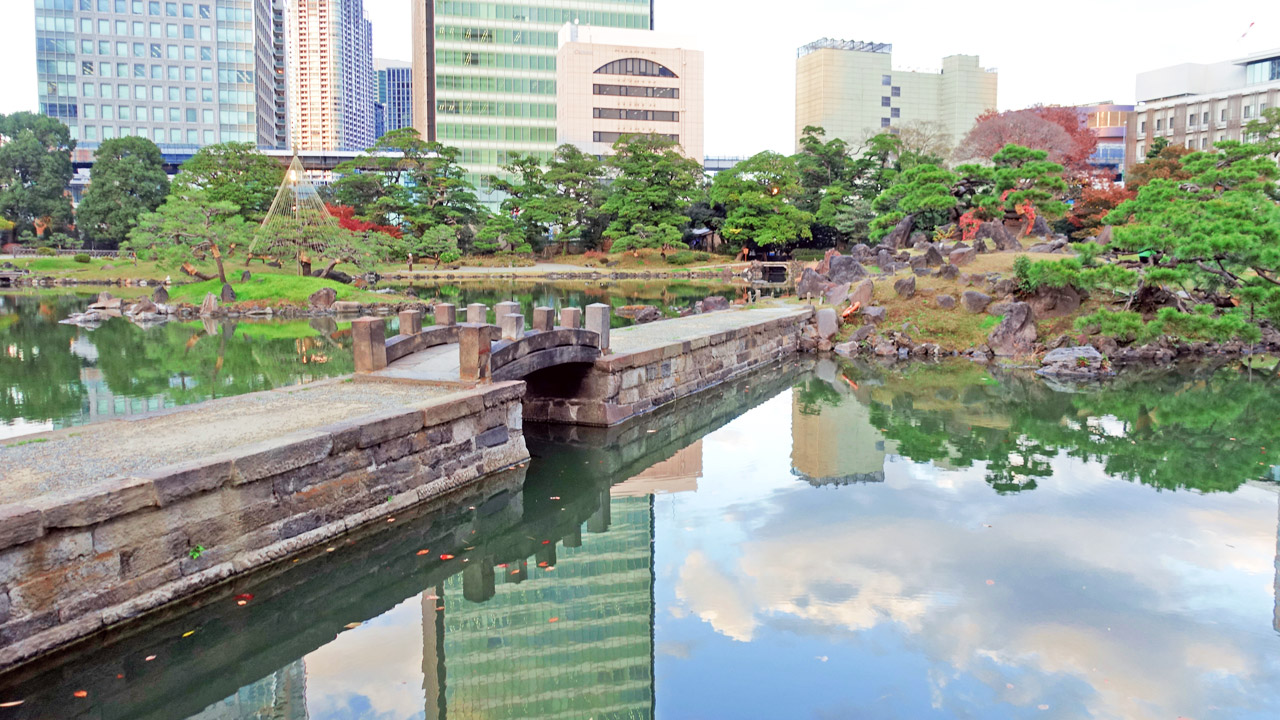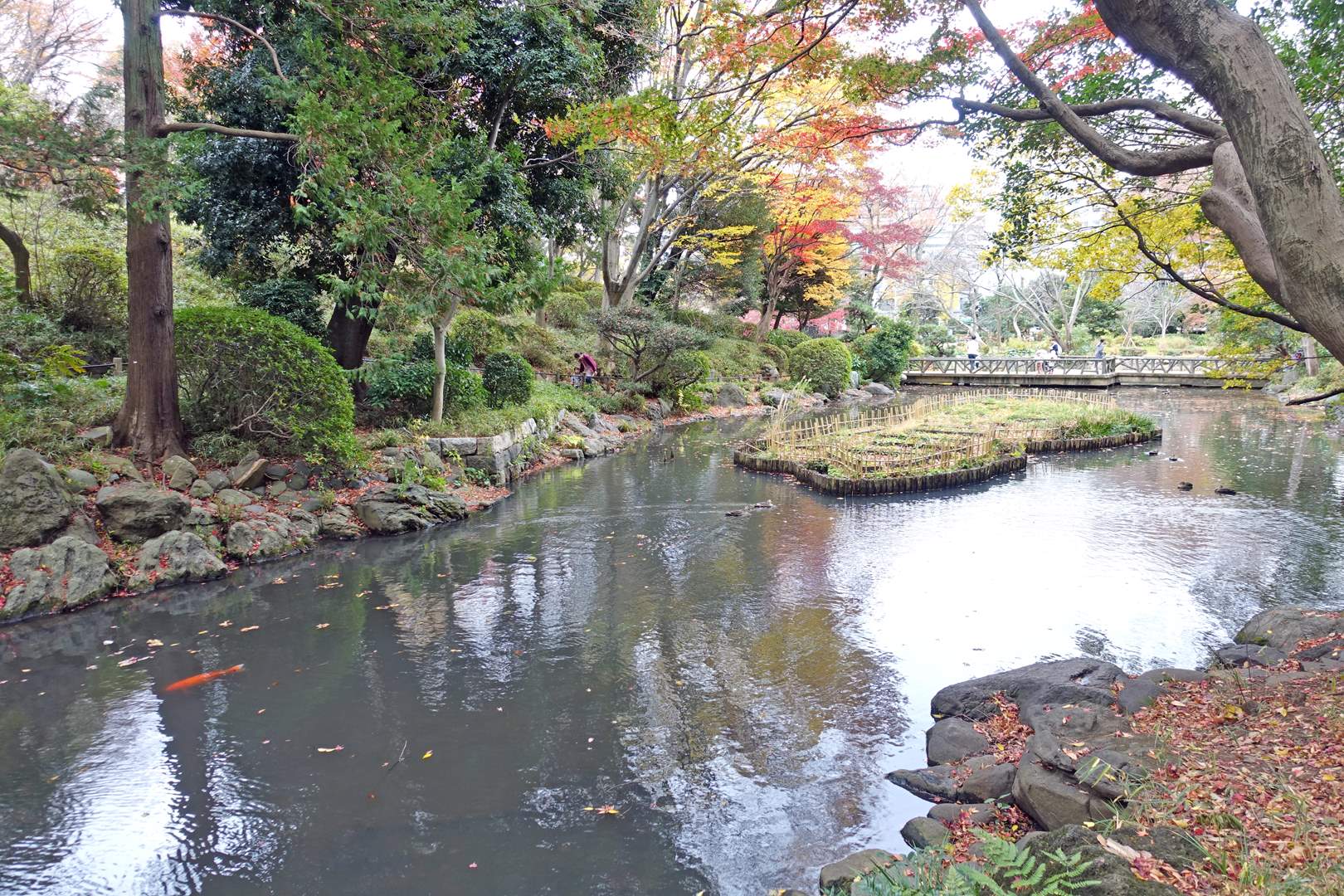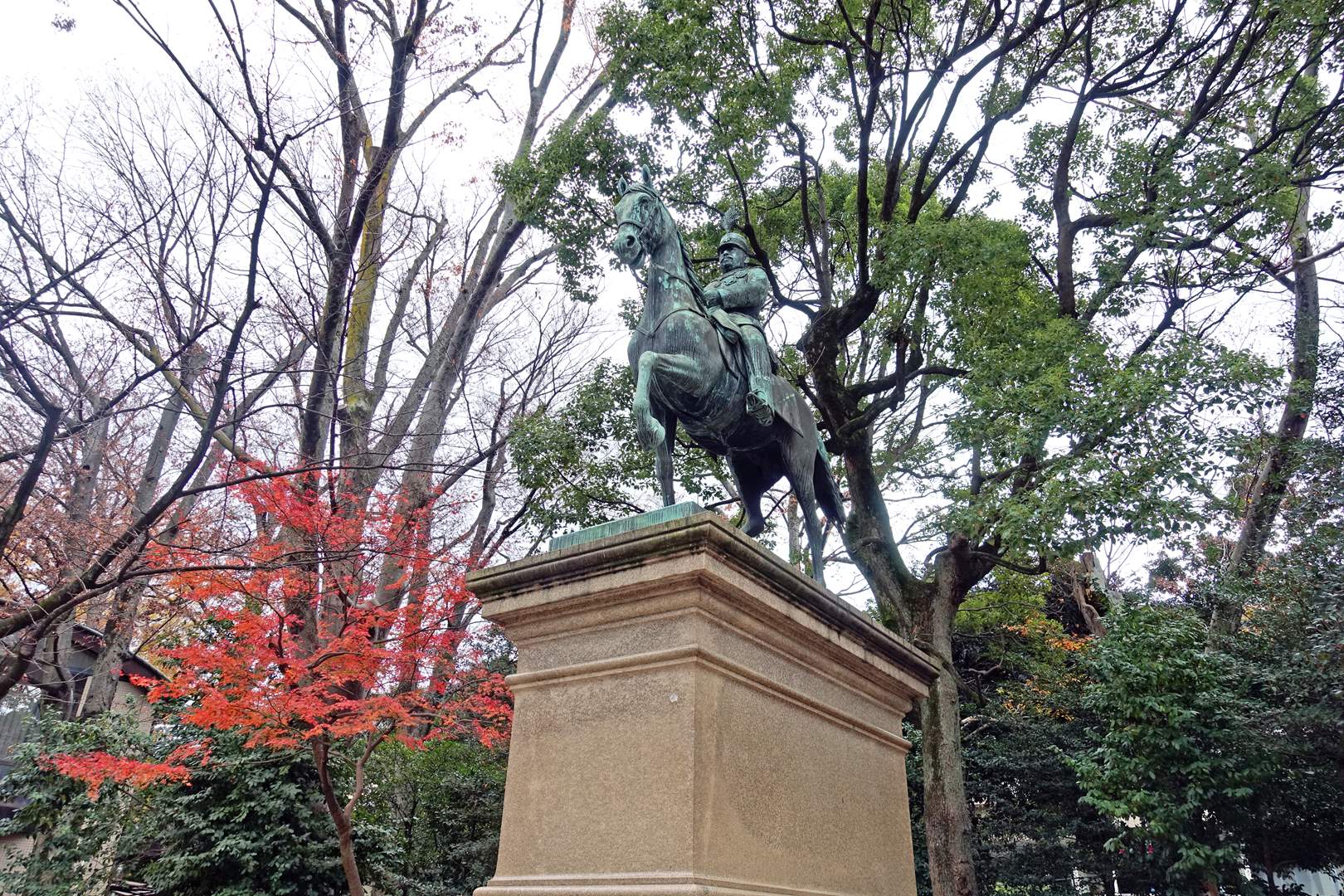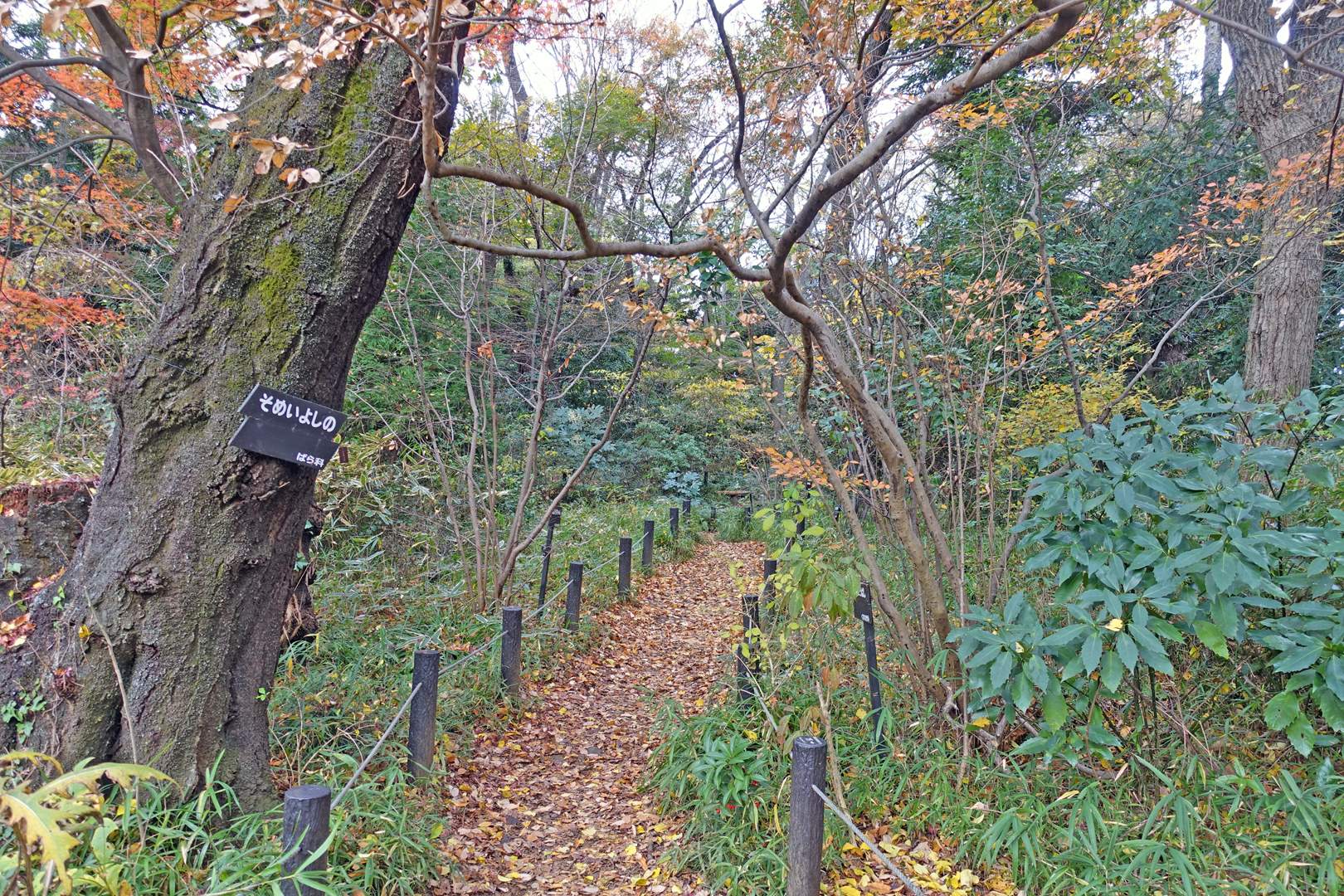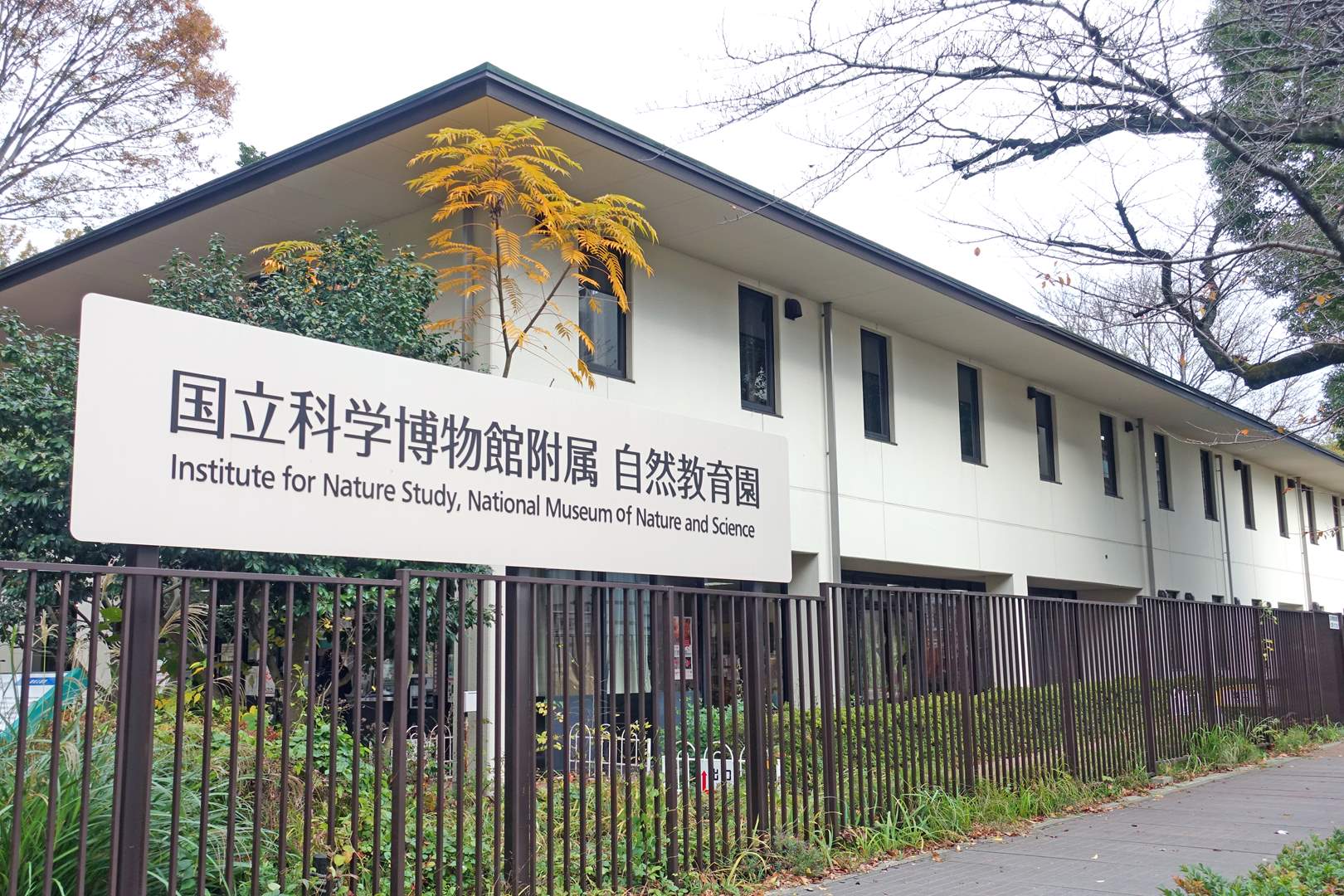Parks, today's public places of relaxation, tell the story of Minato-ku history!
Taking a carefree stroll, eating lunch on a bench, resting under the shade of a tree. Parks are a place of relaxation for people of all ages to enjoy as they please, and experience the changing of the seasons. The birth of the public parks of modern Japan dates back as far as 1873, when the Meiji government issued a directive ordering for scenic and historic places to become public parks known as "koen". With this, Japan's first five public parks were born: Shiba Park, Ueno Park, Asakusa Park, Fukagawa Park, and Asukayama Park.
The places that became public parks at this time were mostly portions of a temple compound; for example, Zojo-ji Temple in Shiba, Kan'ei-ji Temple in Ueno, Senso-ji Temple in Asakusa, Eitai-ji Temple in Fukagawa. In addition, the gardens of daimyo (feudal lord) estates were also established as parks in the same way. For a long time, the Minato-ku area has been an accumulation of many shrines, temples, and estates of military families and feudal lords, and as such, it now contains several parks.
Since Japan's distant past, the grounds of shrines and temples have been used by the townspeople for enjoyment, such as holding festivals, and as such already played a similar role to public parks. It is likely thanks to the unbroken continued use of these places, and the roles and significance they have in people's lives, that Minato has long been an area where people gather.
The places that became public parks at this time were mostly portions of a temple compound; for example, Zojo-ji Temple in Shiba, Kan'ei-ji Temple in Ueno, Senso-ji Temple in Asakusa, Eitai-ji Temple in Fukagawa. In addition, the gardens of daimyo (feudal lord) estates were also established as parks in the same way. For a long time, the Minato-ku area has been an accumulation of many shrines, temples, and estates of military families and feudal lords, and as such, it now contains several parks.
Since Japan's distant past, the grounds of shrines and temples have been used by the townspeople for enjoyment, such as holding festivals, and as such already played a similar role to public parks. It is likely thanks to the unbroken continued use of these places, and the roles and significance they have in people's lives, that Minato has long been an area where people gather.
Shiba Park - Japan's first park, where history and nature coexist
Shiba Park opened as one of Japan's first five urban parks in 1873. Originally, the Zojo-ji Temple grounds were designated as a public park but, in accordance with the postwar separation of church and state, the park was reestablished as an independent metropolitan park with no religious connections, and fitted with new playground and exercise equipment.
This is why Shiba Park now forms a circle around Zojo-ji Temple. When Zojo-ji Temple's grounds were also included, the park's total area was said to be around three times its current area. The flower beds inside the park are tended by the ward's residents, and allow you to enjoy flowers for every season.
Kyu Shiba Rikyu Garden - Take a turn around the oldest daimyo estate garden
An "excursion garden" built around a large pond. Excursion gardens are a type of Japanese-style garden which are best enjoyed by walking around the garden, admiring the seasonal flowers and the scenery inspired by nature's grandeur.
This land was reclaimed from the sea and in 1678 was bestowed upon the council elder Okubo Tadatomo by the shogun Ietsuna Tokugawa, as the daimyo garden "Rakujuen". In those days, the pond's water was supplied by the sea, and the scenery of the islands and sandbank were said to change dramatically with the sea's ebb and flow; when the tide was out, it was even possible to cross between the pond's "Nakajima" and "Ukishima" islands.
This land was reclaimed from the sea and in 1678 was bestowed upon the council elder Okubo Tadatomo by the shogun Ietsuna Tokugawa, as the daimyo garden "Rakujuen". In those days, the pond's water was supplied by the sea, and the scenery of the islands and sandbank were said to change dramatically with the sea's ebb and flow; when the tide was out, it was even possible to cross between the pond's "Nakajima" and "Ukishima" islands.
At the end of the Edo period, the estate belonged to the Kishu Tokugawa clan, before passing into the hands of the Arisugawa-no-miya family and bought by the Ministry of the Imperial Household in 1876, becoming the " Shiba Detached Imperial Villa". It was granted to Tokyo City in commemoration of Emperor Showa's wedding in 1924, opening to the public as "Kyu Shiba Rikyu Garden".
Daiba Park - A seaside park which leaves traces of the Black Ships' arrival
Daiba Park, which adjoins with Odaiba Seaside Park, was built on the site of Battery number 3, one of the Shinagawa batteries built when Perry's Black Ships came to Tokyo Bay, and opened as a park in 1928.
The comic tanka poem, "Just four steamboats awaken a peaceful sleep and keep us up all night", tells of the turmoil in the city when the Black Ships arrived, but the Shogunate were surprised as well. The Edo Shogunate, sensing a crisis in marine defense, built six forts (batteries) in 1853 and applied them to coastal defense.
None of the batteries were used, but at present, Batteries number 3 and 6 remain. Battery number 3 became a park, and Battery number 6 is preserved as a precious historical landmark, rich in nature and scientific value.
None of the batteries were used, but at present, Batteries number 3 and 6 remain. Battery number 3 became a park, and Battery number 6 is preserved as a precious historical landmark, rich in nature and scientific value.
Arisugawa-no-miya Memorial Park - A children's park abundant in nature, passed down from the Arisugawa-no-miya Imperial Family
A Japanese-style garden which makes use of the natural landscape
Although it is in the center of Azabu, you can relax and fully enjoy nature in the quiet Arisugawa-no-miya Memorial Park. A charming undulating Japanese-style garden which makes full use of the terrain of Azabu, a hilly town, with its streams and two waterfalls, one large one small.
This location was used as an urban villa for the Morioka Nanbu daimyo in the Edo period, but in the Meiji period, Prince Takehito Arisugawa had it developed as a residence for his son, Prince Tanehito.
This location was used as an urban villa for the Morioka Nanbu daimyo in the Edo period, but in the Meiji period, Prince Takehito Arisugawa had it developed as a residence for his son, Prince Tanehito.
Bronze statue of Prince Taruhito Arisugawa
His Highness Takamatsu-no-miya, who received the land from the Arisugawa-no-miya family, gifted the land to the Tokyo Metropolitan authorities in the interest of child welfare and education in 1934, and it was opened to the public as a memorial park. The symbol of the park is a bronze statue of Prince Taruhito Arisugawa, which stands close to the park's administrative office.
The Institute for Nature Study - An oasis of nature predating Tokyo Metropolis, in the heart of the city
Precious nature remaining from antiquity
One of the few urban green spaces preserved in its natural state from before Tokyo became the large metropolis it is today. Inside the park, there have been discoveries of shell middens and Jomon pottery, and it is thought to have been the site of a powerful Muromachi clan's house. It has a rich, layered history: in the Edo period, it was the villa of Yorishige Matsudaira, daimyo of the Takamatsu Domain in Sanuki; in the Meiji period, it was a military explosives warehouse; and in the Taisho period, the Ministry of the Imperial Household turned it into the Shirokane Imperial Estate.
In 1949, at the same time as the whole area became designated as a natural monument and historic landmark, it became open to the public as a national park for nature study. After that, in 1962, it was renamed as the Institute for Nature Study of the National Museum of Nature and Science, and remains that way today.
As the public was not able to enter the area, it remains in the bountiful natural state of the Tokyo of old. The park is managed with the aim of preserving it in its rare original state as much as possible, so it really is a precious urban oasis that gives you the feeling you have traveled back in time.
As the public was not able to enter the area, it remains in the bountiful natural state of the Tokyo of old. The park is managed with the aim of preserving it in its rare original state as much as possible, so it really is a precious urban oasis that gives you the feeling you have traveled back in time.
Park Time Travel
Minato-ku Time travel Tour
Many new spots that are ahead of the times are created in Minato-ku - a place where businesses and trends start. This is not a recent thing - Minato-ku has been home to trendy spots throughout history, and many of these places still exist. Minato-ku Time Travel Tour takes a look around those historical trendy spots in Minato-ku based on four different themes. Pick your favorite theme and take a journey back in time!




